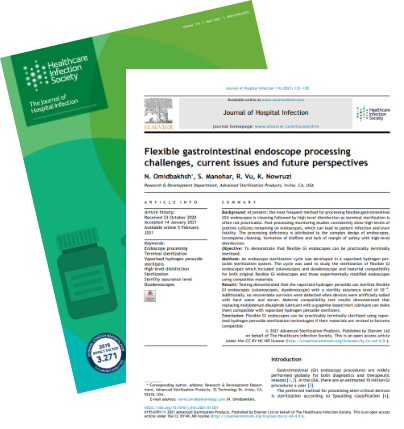Currently, the most common method of handling flexible gastrointestinal (GI) endoscopes is cleaning, followed by high-level disinfection, as terminal sterilization is often impractical.1
In this study, the research and development team from Advanced Sterilization Products examines endoscope processing challenges and the practicability of terminal sterilization.

